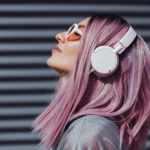A year ago, I finally allowed myself to say that I was creative.
For most of my life, I discounted myself from this group. Creative people were the ones who could draw, paint, play music, direct films, get an A in pottery.
It was only after interviewing over 100 creative people that I began to see I had more in common with them than I ever imagined. The realization sent me on a creative frenzy; I was, as Alicia Keys puts it, on fire.
And then, I wasn’t.
What was all joy and flow was suddenly bleak and numb. I had been going a hundred miles an hour and then I crashed, without even understanding what had hit me. Or what I’d hit.
All I knew was that something had stopped—and was telling me I should stop, too.
Steven Pressfield calls this resistance.
I reread his famous book The War of Art


And I did.
But I still felt terrible. There were a few times I felt physically nauseous while doing my work. This was a first, and it terrified me.
I read more books. From The Artist’s Way


What works for me may not work for you, but sometimes trying something that worked for someone else beats the feel of the desk on your forehead.
1. Wear lipstick.
In Big Magic
One morning I was feeling particularly sluggish and decided, You know what? What the heck? I was desperate. And I had the supplies.
So, I twisted up a hot pink lipstick I’d only worn once before and applied it. I smiled. I had nowhere to go but my same home office desk that had been taunting me for weeks.
It worked.
I usually only wear lipstick for weddings or when I’m on TV or giving a speech, so as I sat down to my desk and pursed my lips, I could feel my brain being tricked. I felt like being at this desk was A Big Event. A time to be seen. Writing suddenly felt less like crawling through mud and more like dancing at my best friend’s wedding.
There are days when I work best in my pajamas with no makeup on. Those are my good days, my flow days. Lipstick helps me on my bad days—a little trick, a little catalyst.
Your version of lipstick could be anything that tricks your brain into thinking that you’re doing something special, fun or important.
2. Don’t write in your journal.
I have written in journals my whole life, so I was ecstatic when Julia Cameron of The Artist’s Way
But after I read this book I became more purposeful in doing three full pages every morning, in being committed to it. And I was.
At some point during the creative block, though, it became too much and I felt I needed to step away from my journal for a while. It was getting too dark. I was spending too much time on my thoughts and emotions—wallowing in my creative block. I needed to step away.
It was glorious.
I absolutely think journaling and writing morning pages helps with creativity, but I also think, if this is something that is already a habit, doing the exact opposite when you’re feeling blocked can help, too.
And if journaling or not journaling is simply not your thing, think about something you do often and stop doing it for a while. Change up your morning routine. Try something new or stop doing something you always do (except for maybe showering?). Give yourself a chance to breathe.
3. Eat with friends.
One of those weeks when I was feeling particularly creatively blocked, a friend invited me to a spontaneous lunch. I knew I had too much to do; I had deadlines to make and I knew I needed to focus, especially because when I’m blocked tasks take me three times as long. My first impulse was to say no.
I found myself saying yes instead. Something told me that this was important—that this would help. I needed to get out of my head, get out of my office. Maybe this would be time well spent.
I came home from that lunch and wrote five times as fast as I had that morning.
There was something in the free flowing conversation, the laughter, the sandwiches. It was like a fan being turned on inside my brain, stirring up the confetti that had fallen dormant, remnants of a party I thought was over.
These little tricks and breaks in my routine played a huge part in helping me get out of my first creative ditch. For you it might be sweatpants, yoga and getting as far away from people as possible. Whatever works.
I’ve learned that different things work for different people at different times. The coolest part to me is that there are things that work; a creative block does not have to be permanent if you don’t want it to be.
How do you wake up your creative side? See what 9 innovative people’s tips for sparking new ideas.









